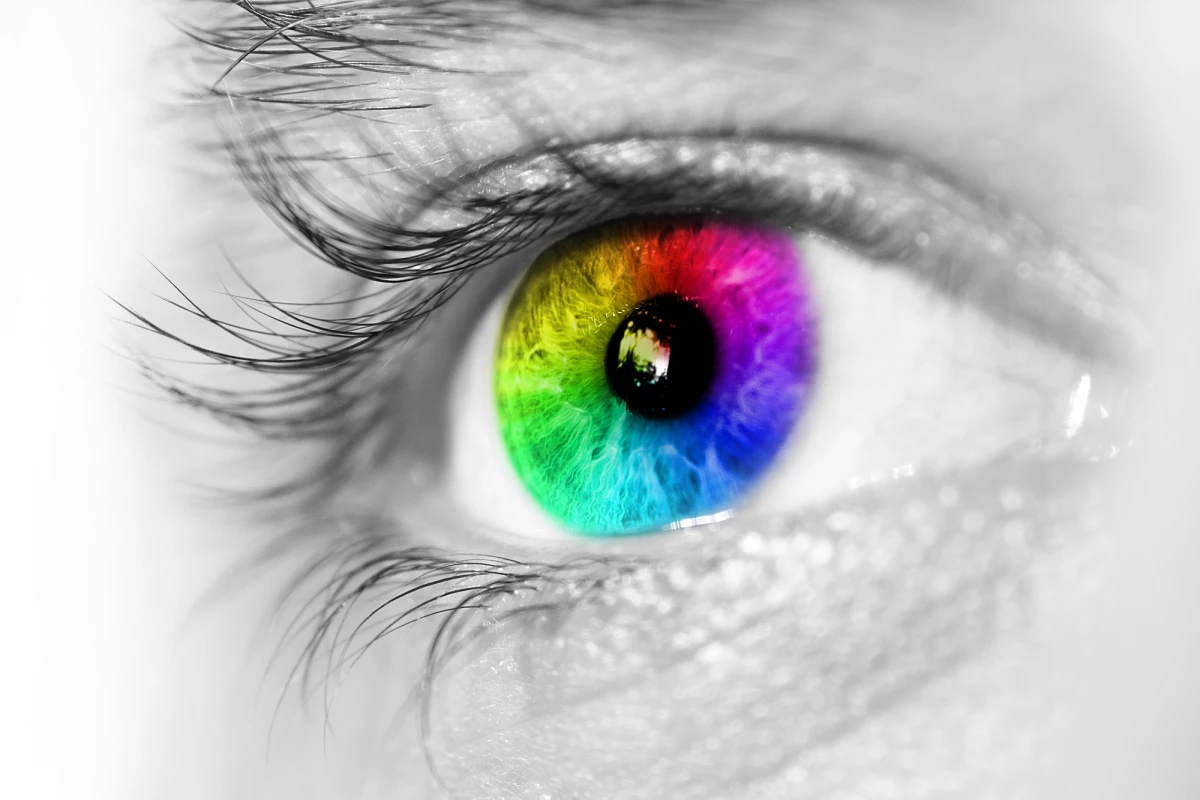The results of a first human trial testing a gene therapy for complete color blindness have been published in the journal JAMA Ophthalmology. The research suggests the experimental gene therapy is safe, and potentially efficacious, opening the door to larger human trials in the future.
Total color blindness, or achromatopsia, is generally an inherited disease caused by mutations in one of six different genes, with the majority of cases involving variants in either the CNGA3 or CNGB3 genes. The new gene therapy being trialed focuses on correcting a defect in the CNGA3 gene.
The treatment is somewhat similar to one of the first FDA-approved gene therapies, for vision loss, called Luxturna. These treatments attach a healthy functioning gene to a genetically modified harmless virus. The treatment is injected into a patient’s eye and hopefully the correctly functioning gene begins producing whatever protein was previously missing, helping cure the condition caused by the defective gene.

In this new trial the researchers recruited nine patients with achromatopsia known to be linked to variants in CNGA3. The primary outcome of this first human trial was to measure the safety of the treatment, and all data suggests there were no major adverse effects from the experimental gene therapy.
“The experimental subjects suffered no drug-related health problems as a result, nor did their retinas show any permanent changes,” explains Dominik Fischer, head of the clinical study.
The study did identify improvements in patients' vision, however, this efficacy result was only a secondary measure of the trial. The trial recruited adults with advanced disease to test safety, but the researchers suggest the treatment will likely be most effective if administered in childhood, as the visual cortex has yet to fully develop and the brain is still highly plastic.
“… the parts of the brain that process vision increasingly lose plasticity in adulthood,” says Marius Ueffing, one of the authors of the new study. “Since the brains of people with achromatopsia have never learned to process color information, they need at least some plasticity to translate the retina’s newly acquired ability to respond to colors into a real visual impression.”
As with Luxturna, this kind of gene therapy should be most effective if administered at a young age, so this first phase result paves the way for further tests in pediatric patients. It is suggested in the study the ideal age may be before a patient reaches approximately seven years old, as after that point the visual cortex has mostly developed and the primary structural loss of cone photoreceptors has taken place.
“Since the gene vectors used have proven to be safe, a follow-up study in pediatric CNGA3 patients is possible and useful,” suggests Stylianos Michalakis, another author on the study.
The new research was published in the journal JAMA Ophthalmology.




